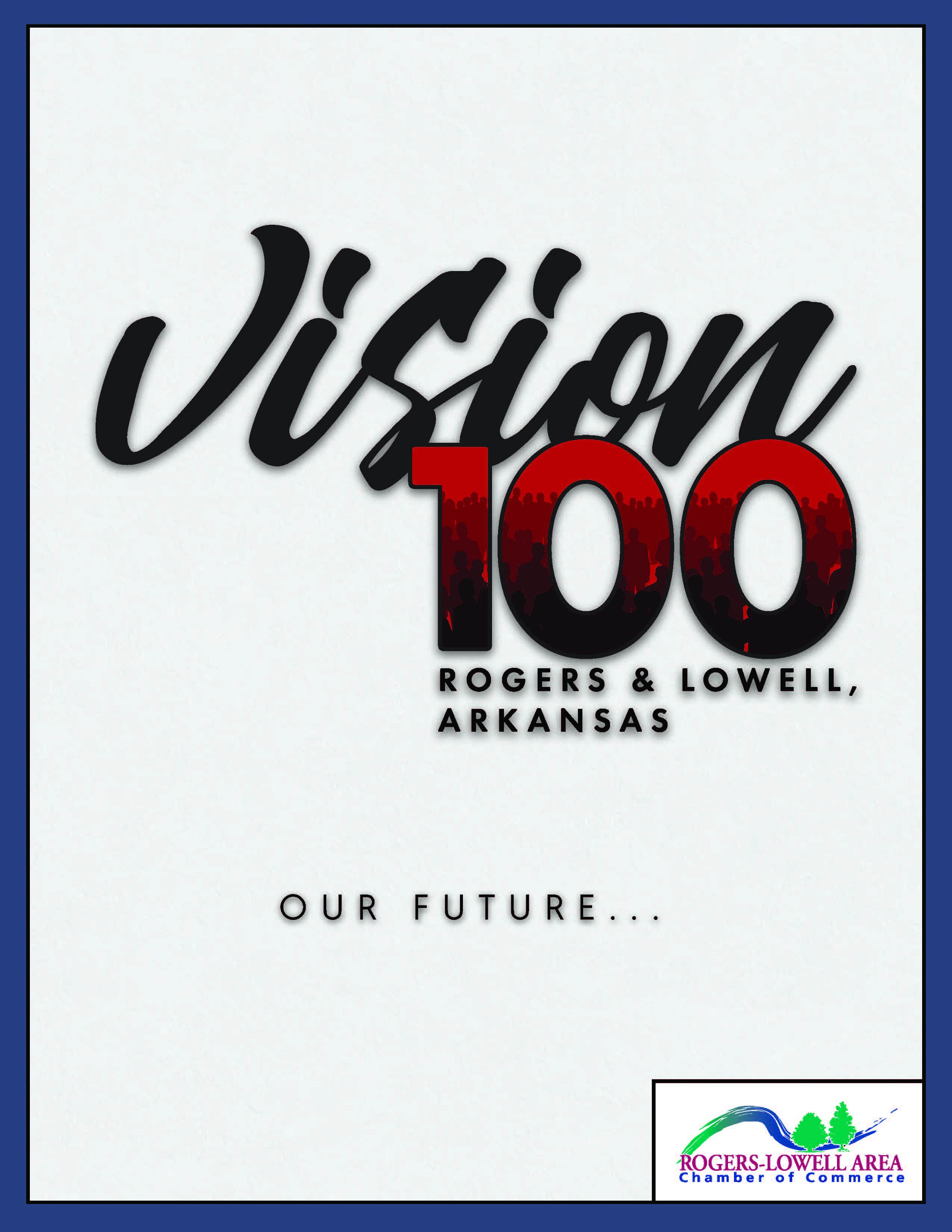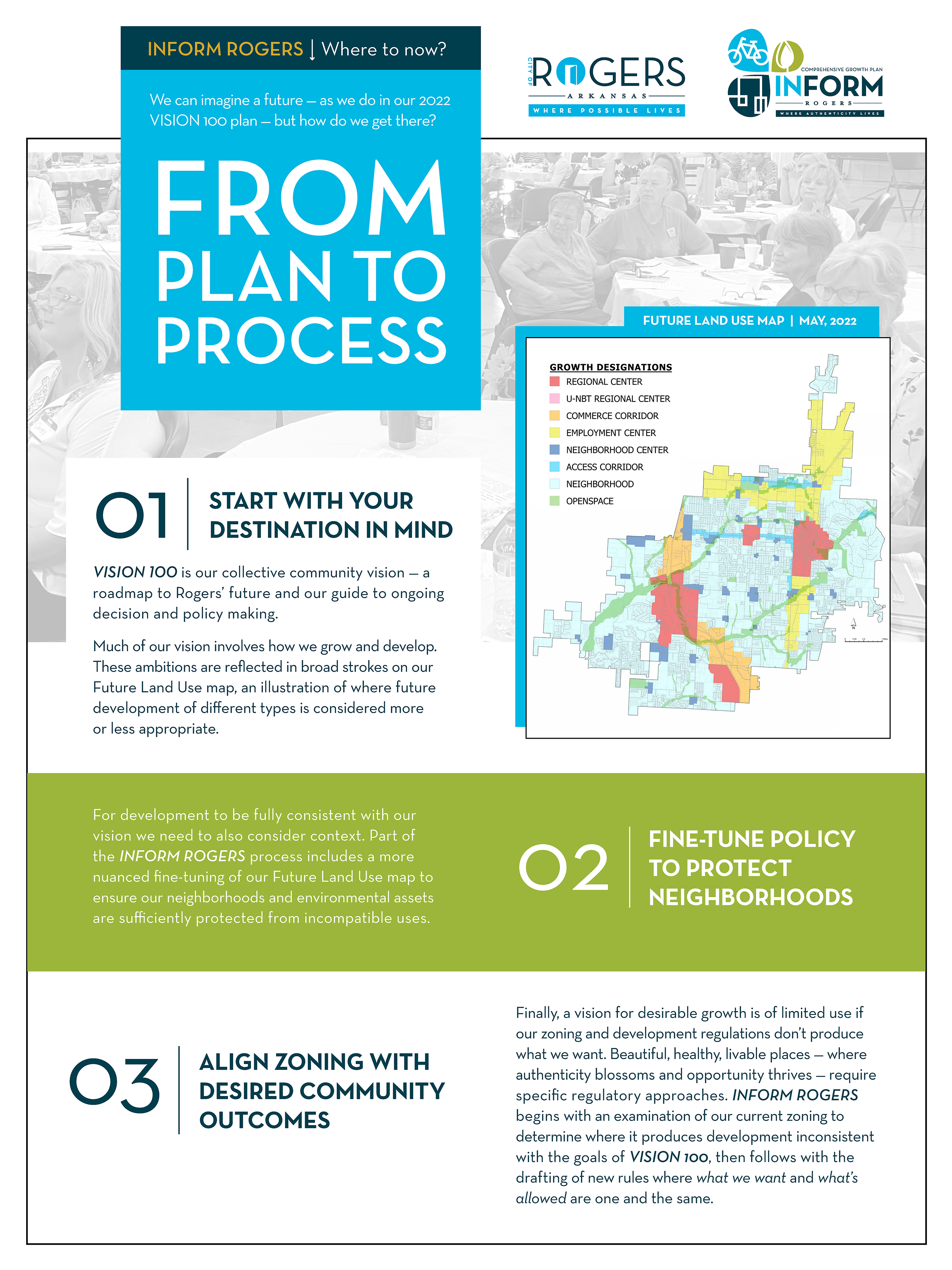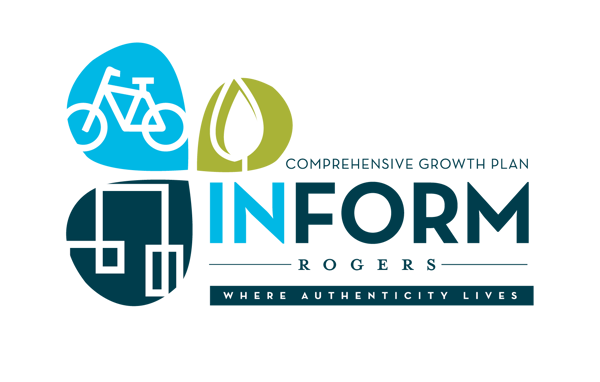Intro
Introduction
INFORM ROGERS: From Plan to Process
Start with your destination in mind
Since 1989, the Rogers-Lowell Area Chamber of Commerce has collaborated proactively with city and regional leaders to produce 10 strategic action plans projecting and planning for our future wants and needs. The latest plan, Vision 100 🔗, guides our march toward a thriving region of 100,000 people.
VISION 100 🔗 is our collective community vision — a roadmap to Rogers’ future and our guide to ongoing decision and policy making. Much of our vision involves how we grow and develop. These ambitions are reflected in broad strokes on our Future Land Use map 🔗, an illustration of where future development of different types is considered more or less appropriate.
Fine-tune policy to protect neighborhoods
For development to be fully consistent with our vision, we need to also consider context. Part of the INFORM ROGERS process includes a more nuanced fine-tuning of our Future Land Use map 🔗 to ensure our neighborhoods and environmental assets are sufficiently protected from incompatible uses.
Align zoning with desired community outcomes
Finally, a vision for desirable growth is of limited use if our zoning and development regulations don’t produce what we want. Beautiful, healthy, livable places — where authenticity blossoms and opportunity thrives — require specific, regulatory approaches. INFORM ROGERS begins with an examination of our current zoning to determine where it produces development inconsistent with the goals of VISION 100 🔗, then follows with the drafting of new rules where what we want and what is allowed are one and the same.
Growing Smarter Grows the Bottom Line
By aligning our development code with our vision, we’ll attract next generation, forward-focused developers to build the walkable, active, destination-worthy centers we’ve envisioned. We’ll protect our existing neighborhoods but we’ll also reward the community with more choices in where and how to live or get around, with meaningful opportunities to spend less on housing, transportation, or household energy.
In time, these strategies will increase property values, tax revenues, and jobs per acre, while reducing associated costs in city services and infrastructure — leaving more funding on the table for other community priorities.
Living Healthy Pays Dividends
The way we build today separates home, work, school, shopping, and civic places, requiring large, fast roads to connect everything. Our development codes guarantee it. That’s why Americans drive seven times more miles each year than we did in 1950, and why more sedentary lifestyles have increased healthcare costs — for both individuals and communities overall.
When we mix compatible uses on traffic-calmed streets — as this effort will do — we improve access to daily needs. More productive, active lifestyles are encouraged. People walk and bike more. Wellbeing increases, weight loss improves, and negative health outcomes are reduced, paying dividends for all.


